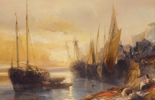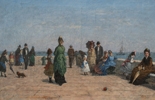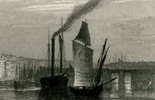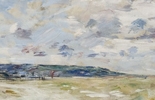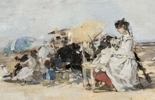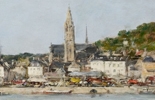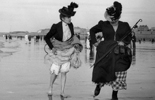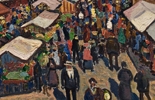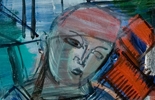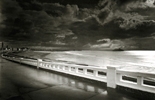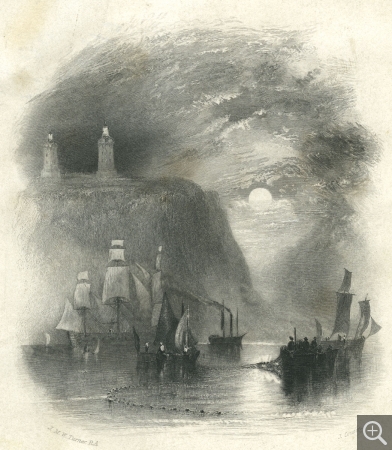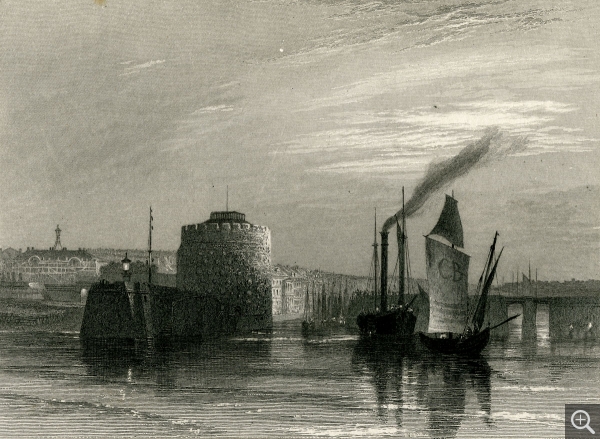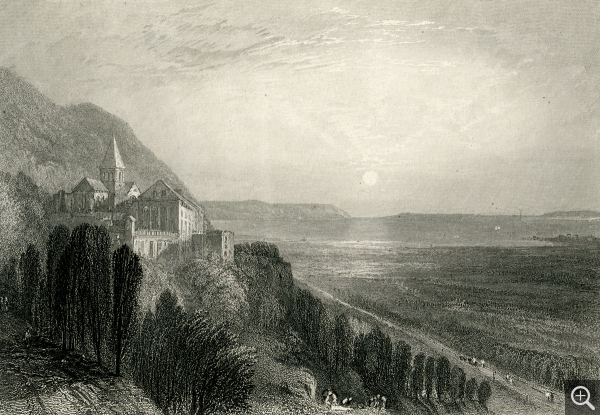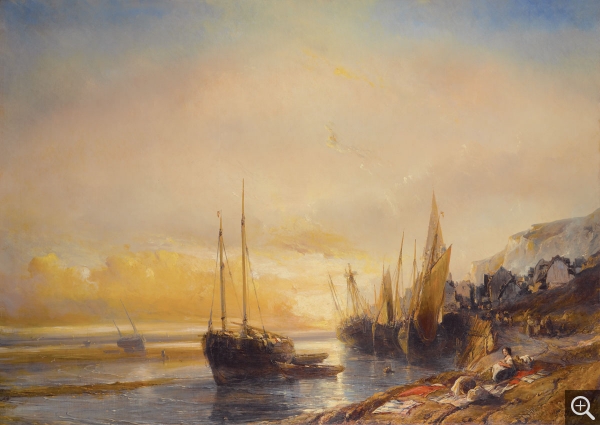L’estuaire de la Seine, l’invention d’un paysage
How the the image of Normandy was created: the role of British and Romantic artists
The end of the Empire and the restoration of the French monarchy in 1815 signalled a return to peace after a period of revolution and years of war in Europe. With the resumption of relations between France and England came the return of British artists to the continent. From the ports of Dieppe or Le Havre, the Seine was a natural access route to Paris. The history of Normandy, an Anglo-Norman kingdom in the 11th and 12th centuries, was reason alone to draw the English to the region.
But the call of Normandy was above all fired by its prestigious architectural heritage at a time when interest in the art of the Middle Ages was starting to develop. The young Romantics were swept up in the English painters' fascination with the vestiges of Feudalism: Gothic churches (Rouen Cathedral and the Church of Saint-Maclou), abbey and castle ruins (Jumièges, Graville, Saint-Wandrille, Tancarville, etc.). Numerous publications in both France and England of books illustrated with engravings, such as Turner's Wanderings by the Seine in 1834, formed a genuine directory of picturesque Norman sites.
The French publication by Taylor and Nodier, Les Voyages pittoresques et romantiques dans l’ancienne France, starting in 1820 with the first two volumes dedicated to Normandy, featured lithographs (a newly invented engraving technique) by the greatest French and English artists of the time, like Bonington, Géricault and Isabey, among others.
In addition to this penchant for ancient monuments, ruins and the picturesque, the Romantic artists also followed the English painters' lead with a renewed interest in landscapes. Huet and Isabey, who travelled to London in the 1820s, soon took to working outdoors, even if they touched up their paintings back in the studio. Still imbued with a Romantic sensibility, the landscapes gradually grew lighter, bolder and freer in execution.
But the call of Normandy was above all fired by its prestigious architectural heritage at a time when interest in the art of the Middle Ages was starting to develop. The young Romantics were swept up in the English painters' fascination with the vestiges of Feudalism: Gothic churches (Rouen Cathedral and the Church of Saint-Maclou), abbey and castle ruins (Jumièges, Graville, Saint-Wandrille, Tancarville, etc.). Numerous publications in both France and England of books illustrated with engravings, such as Turner's Wanderings by the Seine in 1834, formed a genuine directory of picturesque Norman sites.
The French publication by Taylor and Nodier, Les Voyages pittoresques et romantiques dans l’ancienne France, starting in 1820 with the first two volumes dedicated to Normandy, featured lithographs (a newly invented engraving technique) by the greatest French and English artists of the time, like Bonington, Géricault and Isabey, among others.
In addition to this penchant for ancient monuments, ruins and the picturesque, the Romantic artists also followed the English painters' lead with a renewed interest in landscapes. Huet and Isabey, who travelled to London in the 1820s, soon took to working outdoors, even if they touched up their paintings back in the studio. Still imbued with a Romantic sensibility, the landscapes gradually grew lighter, bolder and freer in execution.

- Drawing by Joseph Mallord William TURNER (1775–1851); engraved by John COUSEN (1804–1880), Light Towers Of The Heve, copperplate engraving, 20. 9 x 12.9 cm. Provient de l’album “Wanderings by the Seine. By Leitch Ritchie… with 20 engravings from drawings by J.M.W. Turner”, Londres, Longmann, 1834. © MuMa Le Havre / Charles Maslard
- Drawing by Joseph Mallord William TURNER (1775–1851); engraved by Robert WALLIS (1794–1878), Havre, copperplate engraving, 10.2 x 14 cm. Provient de l’album “Wanderings by the Seine. By Leitch Ritchie… with 20 engravings from drawings by J.M.W. Turner”, Londres, Longmann, 1834. © MuMa Le Havre / Charles Maslard
- Drawing by Joseph Mallord William TURNER (1775–1851); engraved by Robert BRANDARD (1805–1862), Graville, copperplate engraving, 10.2 x 14 cm. Provient de l’album “Wanderings by the Seine. By Leitch Ritchie… with 20 engravings from drawings by J.M.W. Turner”, Londres, Longmann, 1834. © MuMa Le Havre / Charles Maslard
- Eugène ISABEY (1803-1886), The Ecores, 1839, oil on canvas, 149 x 210 cm. Trouville-sur-Mer, musée villa Montebello. © All rights reserved


